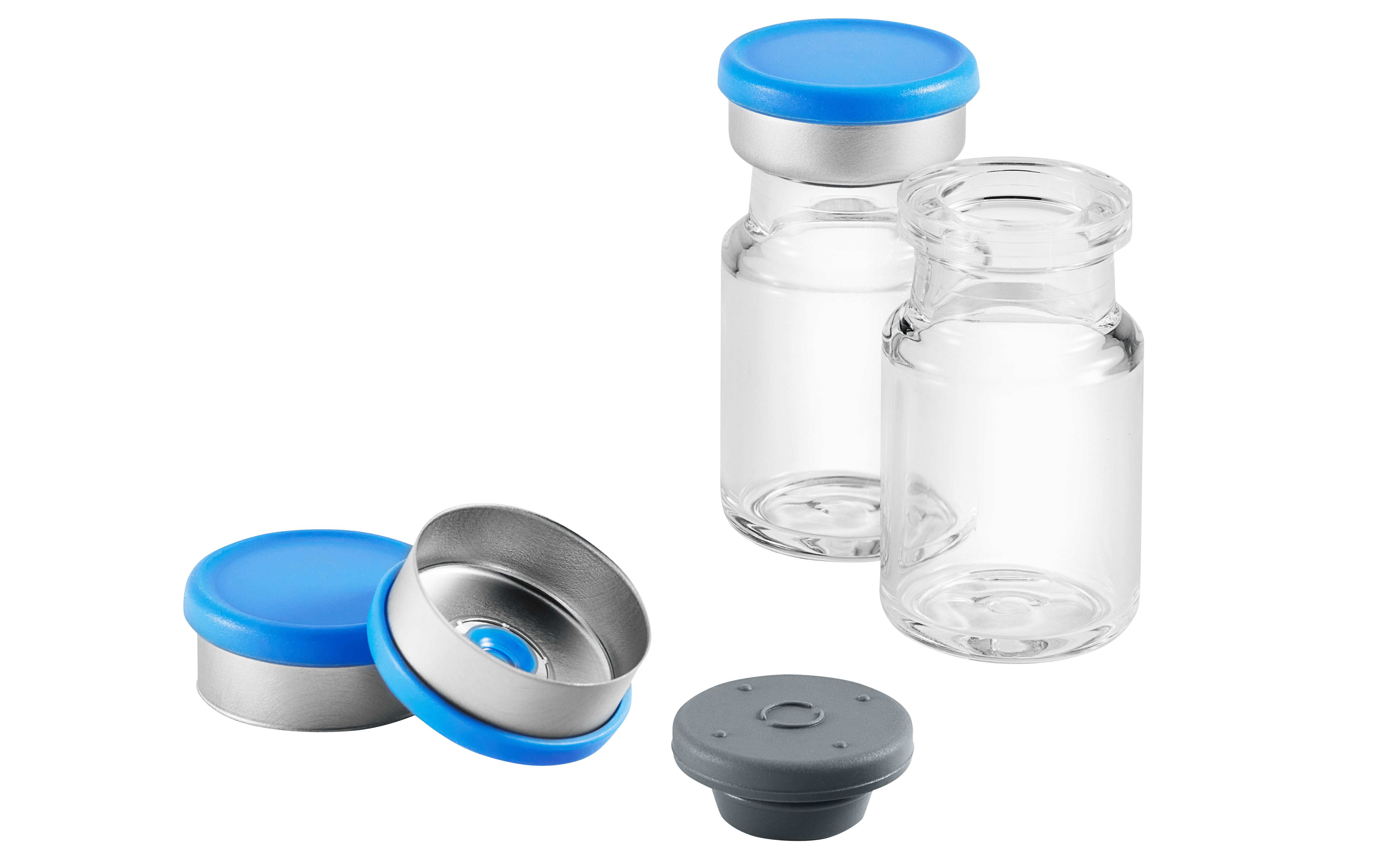Daikyo Container Closure Systems as an Ideal Solution for Radiopharmaceuticals
Nuclear medicine has been extensively used not only to diagnose but also to treat diseases. Radio-labeled proteins and peptides are widely used for this purpose, and glass vials have been traditionally used to store radio-labeled pharmaceutical parenteral dosage forms. One important factor for successful use of the container closure systems (CCS) is how precisely and efficiently the radiopharmaceutical solution is withdrawn from the sealed container. However, due to the generally hydrophobic nature of these compounds, chemical reactions, including product synthesis and purification processes, are often complicated and costly. Overcoming the potential for adsorption of these compounds to the surface of the CCS is key to maximizing the effectiveness of radiopharmaceuticals.

Positron Emission Tomography (PET) uses short-lived positron-emitting radionuclides, such as 68Ga and 64Cu. For a clinical application, Leece et. al. evaluated Daikyo Crystal Zenith® (CZ) Ready-to-Use 10 mL vials, with associated Daikyo stoppers and seals, and compared the adsorption of the reaction product with a standard USP Type I borosilicate glass CCS [1]. In this study, 68Gallium Chloride was used to label various amounts of DOTATOC ([68 Ga] Ga-DOTA-D-Phe1-Tyr3-octreotide) and HEPES (4-(2- hydroxyethyl)piperazine-1-ethanesulfonic acid) or 0.75M acetate buffer solution in the CZ or glass CCS. After sealing the vials containing reaction mixtures with the stopper and seal, each container system was heated for 15 min, then cooled down to room temperature. The reaction product was then withdrawn and assayed for the retained 68Ga-DOTATOC amount. The results showed that the CZ CCS retained less activity than the glass CCS. The retained DOTATOC amount with 15 mg or 30 mg system in 2M HEPES buffer solution showed approximately 10% less of the labeled DOTATOC compared to the glass CCS. Different buffer solutions of either sodium acetate or HEPES with 15 mg or 30 mg of DOTATOC system also demonstrated an approximately 2.5% less retention of the total reaction activity in the CZ CCS compared to the glass CCS. As the final product yield was shown to be equivalent with no retention of 68Galium Chloride in both glass and CZ systems under the same reaction conditions, it was concluded that the recovery of the synthesized product that involves peptide labeling was improved by utilizing the CZ based CCS, including associated Daikyo stoppers and seals.
Furthermore, Tominaga et. al. investigated the adsorption of radiopharmaceutical imaging agents labeled with 64Copper Chloride to glass and CZ vials [2]. In this study, three products were evaluated: 64Cu-peptide with 8 amino acids, 64Cu-antibody and free 64Copper Chloride. 100 µL of these three products were individually placed in 10 mL glass and CZ vials, then dried for 60 minutes at 120°C. 10 mL of Water for Injection (WFI) was added, and the residual amount of each compound in the vial was determined. The results showed that those amounts of the free 64Copper Chloride, 64Cu-peptide and 64Cu-antibody from CZ CCS were on average approximately 67%, 70% and 87% less than the corresponding glass CCS, respectively. These results indicate that the adsorption of radio-labeled compounds in the CZ CCS is much lower than the glass system, and the CZ vial was shown to be suitable for storing radiopharmaceutical products by improving the recovery from the CZ container.
As a part of the primary CCS, Daikyo stoppers also play an important role in achieving the additional quality to the container system. Daikyo’s D21-7S elastomer was used in these evaluations to provide not only the integrity of sufficient sealing of the entire system but also the highest chemical purity to pharmaceutical compounds. The rubber material is composed of chlorobutyl rubber, and it exhibits a low organic and metal ion extractable profile. This material is also known for resisting coring by needle puncture, thus mitigating potential risk to patient safety. Flurotec™ technology is implemented in this stopper in such a way that drug contact area is laminated with ethylene tetrafluoroethylene (ETFE) copolymer film to protect the drug solution from potential exposure to extractables.
Radiopharmaceutical dosage forms are being administered to patients; thus, the integrity of the primary container closure systems must be sufficiently robust in order to assure dosing accuracy and safety for administration to humans. Using Daikyo Crystal Zenith® containers and their corresponding elastomer components as the primary CCS is shown to be an ideal solution for pharmaceuticals that require premium quality for parenteral injection.
Click here for more information on Daikyo Crystal Zenith vials. For more on Daikyo elastomer components check out this page.
Crystal Zenith® and Flurotec™ are trademarks and registered trademarks of Daikyo Seiko, Ltd.
Crystal Zenith technology is licensed from Daikyo Seiko, Ltd.
References
[1] Leece, A.K., et. al. A container closure system that allows for greater recovery of radiolabeled peptide compared to the standard borosilicate glass system. Applied Radiation and Isotopes, 80 (2013) 99–102
[2] Tominaga, H. et. al. Assessment of suitable vial for Radiopharmaceutical agents. Pharmaceutical Society of Japan, General Meeting, Okayama 2010.



